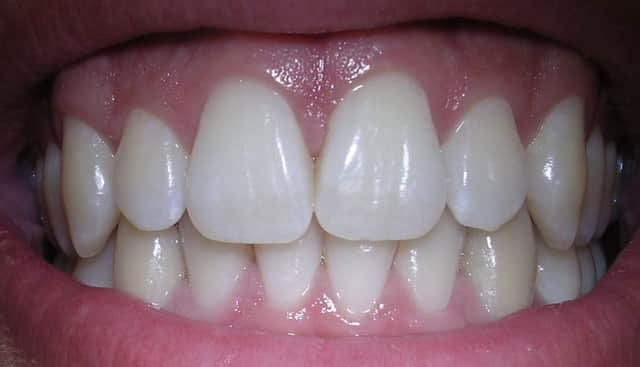Gum disease bug linked to Alzheimer’s in breakthrough


The new evidence that infectious bacteria drive Alzheimer’s progression could potentially transform current thinking about how the disease should be tackled.
Porphyromonas gingivalis is one of the chief causes of gum disease and tooth loss in humans, and has also been associated with artery damage.
Advertisement
Hide AdAdvertisement
Hide AdThere have been previous suggestions that it may play a role in Alzheimer’s, but the latest study by a US-led international team of scientists appears to put the link beyond question.
Researchers made the discovery after analysing brain tissue, spinal fluid, and saliva from dead and living patients with diagnosed and suspected Alzheimer’s. They found evidence of toxic enzymes, known as gingipains, that are released by P gingivalis, plus DNA from the bacterium.
In addition, the bug was found to spread from the mouths to the brains of mice. Tests on the animals confirmed that gingipain enzymes destroyed brain neurons.
However, the scientists also tested drugs that blocked gingipains and found they were able halt the neurodegeneration. One drug, given to mice in food, effectively treated P gingivalis brain infections and prevented the loss of memory neurons.
The team has now developed a new drug, COR388, that better penetrates the central nervous system and could form the basis of a human Alzheimer’s treatment. A large-scale clinical trial that will involve giving the drug to patients with mild to moderate Alzheimer’s is planned for later this year.
Dr Stephen Dominy, one of the study authors and co-founder of the US company Cortexyme, which developed COR388, said: “Infectious agents have been implicated in the development and progression of Alzheimer’s disease before, but the evidence of causation hasn’t been convincing.
“Now, for the first time, we have solid evidence connecting the intracellular gram-negative pathogen Pg [P gingivalis] and Alzheimer’s pathogenisis, while also demonstrating the potential for a class of small molecule therapies to change the trajectory of the disease.”
The scientists tested more than 50 brain tissue samples and found 96 per cent contained one type of gingipain enzyme and 91 per cent contained another type.
Advertisement
Hide AdAdvertisement
Hide AdThe gene was also found in cerebro-spinal fluid from seven out of ten living patients diagnosed with Alzheimer’s.
Saliva samples from ten patients with suspected Alzheimer’s all proved positive for the P gingivalis gene.
The findings are published in the latest edition of the journal Science Advances.